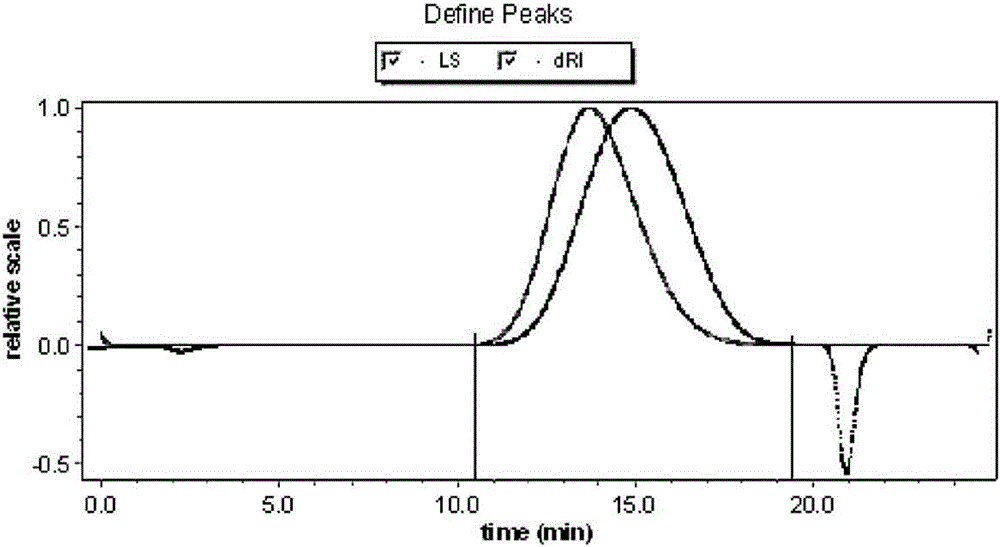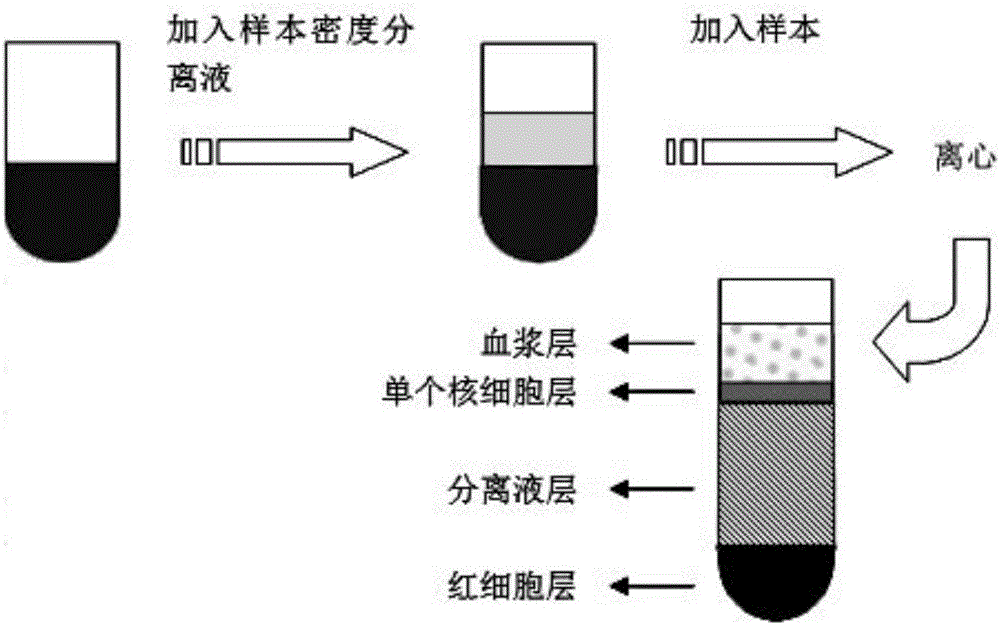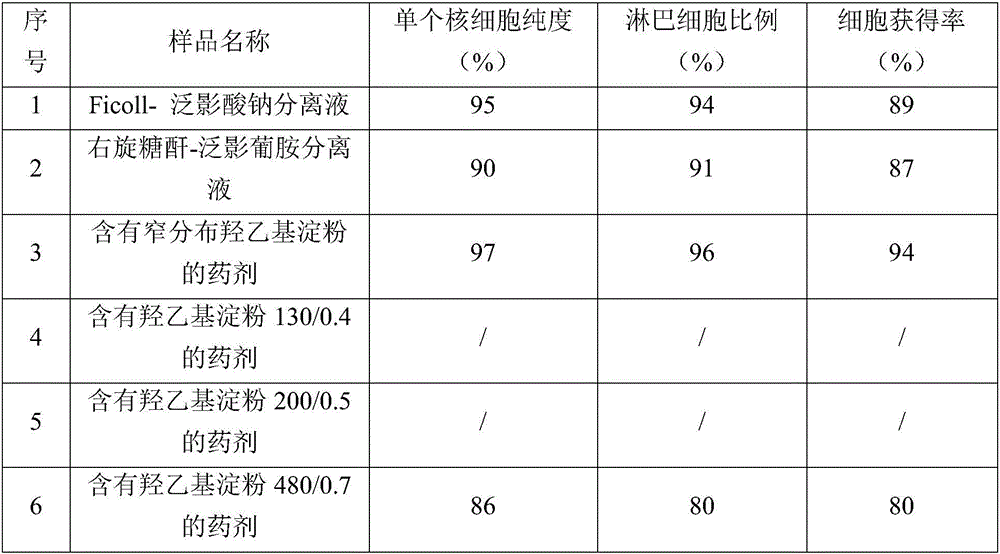Narrow-distributed hydroxyethyl starch and application thereof
A hydroxyethyl starch, narrow distribution technology, used in the field of medicine, can solve the problems of cell toxicity, affecting cell activity, and poor cell status.
- Summary
- Abstract
- Description
- Claims
- Application Information
AI Technical Summary
Problems solved by technology
Method used
Image
Examples
Embodiment 1
[0029] Prepare a cornstarch suspension with a concentration of 15% (w / v), gelatinize at 95°C for 30min, adjust the acidity of the system to 0.5mol / L with hydrochloric acid, set the temperature at 60°C, and react for 4 hours to obtain starch hydrolyzate; starch hydrolyzate The concentrated solution is obtained by separating the ultrafiltration membrane with a molecular weight cut-off of 50,000Da; 2 Carry out hydroxyethyl substitution reaction with oxirane under protection under sodium hydroxide catalysis, wherein starch hydrolyzate: sodium hydroxide: the reaction molar ratio of chloroethanol is 1:0.8:0.5, and the reaction time is 10 hours, and reaction temperature The temperature is 35°C; the reaction solution is decolorized by activated carbon, filtered and then spray-dried to obtain a powder product of narrowly distributed hydroxyethyl starch. According to the method of Ph.Eur.2.2.30and monograph (01 / 2011:1785), the weight-average molecular mass Mw of the product is 2.883e+5,...
Embodiment 2
[0031] Taking the commercially available Ficoll-sodium diatrizoate separating liquid as the control sample, respectively, with the narrow distribution hydroxyethyl starch, hydroxyethyl starch 130 / 0.4, hydroxyethyl starch 200 / 0.5 and hydroxyethyl starch 480 / The medicine of 0.7 is a test sample.
[0032] (i) Take fresh anticoagulated blood, carefully add it to the upper layer of Ficoll-sodium diatrizoate separation solution according to the volume 1:1, and centrifuge at 500g for 30 minutes at room temperature (18-22°C). Cells are divided into four layers, such as figure 2 shown. The first layer is the plasma layer (containing platelets). The second layer is a ring of opalescent lymphocytes (monocyte / mononuclear cell layer). The third layer is a transparent separation liquid layer. The fourth layer is the red blood cell layer (containing a large number of neutrophils). Collect the cells and put them into a test tube containing 10 mL of washing solution, mix thoroughly, and...
PUM
 Login to View More
Login to View More Abstract
Description
Claims
Application Information
 Login to View More
Login to View More - R&D
- Intellectual Property
- Life Sciences
- Materials
- Tech Scout
- Unparalleled Data Quality
- Higher Quality Content
- 60% Fewer Hallucinations
Browse by: Latest US Patents, China's latest patents, Technical Efficacy Thesaurus, Application Domain, Technology Topic, Popular Technical Reports.
© 2025 PatSnap. All rights reserved.Legal|Privacy policy|Modern Slavery Act Transparency Statement|Sitemap|About US| Contact US: help@patsnap.com



